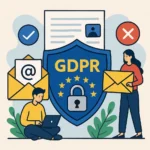Now Reading: Why Storytelling in Content Marketing Drives Results: Strategies for Success
-
01
Why Storytelling in Content Marketing Drives Results: Strategies for Success
Why Storytelling in Content Marketing Drives Results: Strategies for Success

Storytelling in content marketing has emerged as the critical differentiator between forgettable content and campaigns that resonate, engage, and convert. From Nike’s inspirational athlete journeys to Airbnb’s host experiences, the most successful brands have mastered the art of narrative to forge deeper connections with their audiences.
But what exactly makes storytelling so powerful in content marketing, and how can you harness this approach to elevate your brand’s presence? This comprehensive guide explores the fundamental role of storytelling in content marketing, providing actionable strategies to craft narratives that captivate your audience and drive meaningful results.
Key Takeaways
- Storytelling in content marketing creates emotional connections with audiences, making your brand more relatable and memorable
- Well-crafted narratives increase content engagement by up to 22 times compared to fact-based content alone
- Stories humanize brands by giving them personality, values, and a distinct voice in the marketplace
- Strategic storytelling differentiates your brand from competitors by highlighting your unique journey and values
- Narrative-driven content improves key metrics including time on page, sharing behavior, and ultimately, conversion rates
- Effective brand stories follow a clear structure with relatable characters, authentic scenarios, and a compelling arc
Why Storytelling Matters In Content Marketing
Humans are hardwired for stories. Long before written language, our ancestors gathered around fires to share narratives that educated, entertained, and preserved cultural values. This fundamental connection to storytelling hasn’t diminished with time—it’s simply evolved into new forms, including content marketing.
The Science Behind Storytelling’s Effectiveness
The human brain processes stories differently than it does facts or data. When we encounter a compelling narrative, our brains release oxytocin, often called the “empathy hormone,” which helps us feel connected to the characters and situations in the story. This neurological response explains why stories are remembered up to 22 times more effectively than facts alone.
For content marketers, this presents an extraordinary opportunity. By framing your brand message within a narrative structure, you’re not just conveying information—you’re creating an experience that resonates on a neurological level with your audience.
Creating Emotional Connections Through Narrative
At its core, effective content marketing aims to forge meaningful connections with audiences. Storytelling accelerates this process by evoking emotional responses that plain information simply cannot achieve.
When ModCloth describes a dress not just by its features but by painting a scene of “drifting around an art gallery during your internship,” they’re inviting customers to imagine themselves in a specific scenario, wearing their product. This emotional projection is far more powerful than listing fabric content and measurements.
These emotional connections translate directly to business results:
- Content with emotional elements generates 2x more engagement
- Emotionally connected customers have a 306% higher lifetime value
- Emotional motivators drive consumer behavior more effectively than rational factors
Humanizing Your Brand Through Stories
In today’s market, consumers increasingly choose brands that align with their values and feel authentic. Storytelling in content marketing helps humanize your brand by:
- Revealing the people behind the products
- Sharing your company’s origin and mission
- Demonstrating your values through real-world examples
- Creating relatable characters that embody your brand personality
When you share stories about your team’s journey, customer successes, or the challenges you’ve overcome, you transform your brand from an abstract entity into something with personality and purpose. This humanization builds trust—the foundation of lasting customer relationships.
Useful Articles:
Essential Elements Of Effective Brand Storytelling
Not all stories are created equal. The most effective brand narratives share common elements that make them resonant and memorable.
Understanding Your Audience Deeply
Before crafting your story, you must understand who you’re telling it to. Audience research forms the foundation of effective storytelling in content marketing.
Ask yourself:
- Who is your primary customer?
- What challenges do they face?
- What aspirations drive them?
- What language and references will resonate with them?
This understanding allows you to create characters and scenarios that your audience can relate to immediately. For example, a B2B software company might tell stories featuring characters who face the same daily frustrations as their target buyers, while a wellness brand might center narratives around the transformation their customers seek.
Developing A Clear Narrative Structure
Even the most creative brand stories benefit from following a clear structure. The classic beginning-middle-end format provides a framework that guides readers through your narrative:
- Beginning: Introduce a relatable challenge or situation that hooks the reader
- Middle: Present your brand, product, or service as part of the journey toward resolution
- End: Showcase the transformation or solution, ideally with your offering playing a central role
This structure creates narrative tension that keeps audiences engaged while naturally positioning your brand as part of the solution.
Using Relatable Characters And Authentic Scenarios
The most compelling stories in content marketing feature characters and situations that feel authentic to your audience. Whether you’re telling customer success stories, employee journeys, or fictional narratives that embody your brand values, authenticity is non-negotiable.
Consider these approaches:
- Feature real customers in case studies and testimonials
- Create composite characters based on your buyer personas
- Share stories from team members that illuminate your company culture
- Develop brand mascots or recurring characters that embody your values
The key is ensuring these characters face challenges and situations that your audience recognizes from their own lives.
Incorporating Visual Elements To Enhance Your Story
While written narratives are powerful, visual storytelling amplifies your message significantly. The human brain processes visuals 60,000 times faster than text, making visual elements essential companions to your written stories.
Effective visual storytelling includes:
- High-quality images that evoke emotion
- Videos that bring your narrative to life
- Infographics that simplify complex information
- Interactive elements that immerse the audience in your story
Each visual element should advance your narrative rather than simply decorating it. When text and visuals work in harmony, your story becomes more immersive and memorable.
Practical Applications Of Storytelling Across Content Formats
Storytelling in content marketing isn’t limited to a single format. The principles of effective narrative can enhance virtually every type of content you create.
Blog Posts And Articles: Weaving Narratives Into Written Content
Long-form written content provides an ideal canvas for storytelling. To incorporate narrative elements into your blog posts:
- Open with an anecdote that illustrates the problem you’ll address
- Use a protagonist (real or composite) to guide readers through the content
- Include dialogue to make concepts more relatable
- Create a narrative arc that leads to a satisfying conclusion
For example, instead of writing a generic post about “Spring Flowers,” a florist might create “How 5 Spring Flowers Starred in an Unconventional Wedding,” using a specific story to make their expertise memorable and unique.
Video Content: Visual Storytelling That Captivates
Video naturally lends itself to storytelling, combining visual, auditory, and emotional elements into a powerful package. Effective video storytelling:
- Establishes an emotional connection in the first few seconds
- Features relatable characters facing authentic challenges
- Shows rather than tells your brand’s value proposition
- Creates a clear beginning, middle, and end
Whether you’re creating short social media clips or longer YouTube content, the narrative structure should guide viewers through an emotional journey that connects to your brand message.
Social Media: Micro-Storytelling For Maximum Impact
The constrained format of social media requires a different approach to storytelling—one that delivers narrative impact in a condensed space. Successful social media storytelling:
- Uses powerful imagery to establish context quickly
- Crafts captions that suggest a larger narrative
- Creates serialized content that builds an ongoing story
- Leverages platform-specific features like Instagram Stories or Twitter threads
Even within the limitations of social platforms, you can create narrative moments that resonate with your audience and reinforce your brand story.
Email Campaigns: Sequential Storytelling For Deeper Engagement
Email sequences provide a unique opportunity to tell stories over time, deepening engagement with each installment. To leverage storytelling in email marketing:
- Create cohesive narrative arcs across multiple emails
- Use subject lines that build curiosity about the next chapter
- Develop characters or scenarios that evolve throughout the sequence
- Maintain consistent voice and visual elements to unify the story
This approach transforms your email campaigns from isolated messages into an ongoing conversation with your audience, significantly improving open rates and engagement.
Useful Articles:
Measuring The Impact Of Storytelling In Content Marketing
Like all marketing strategies, storytelling should deliver measurable results. While narrative impact can sometimes feel intangible, several metrics can help you assess the effectiveness of your storytelling approach.
Engagement Metrics That Reflect Narrative Success
Compelling stories naturally drive higher engagement. Monitor these metrics to gauge how well your narratives are resonating:
- Time on page: Stories typically increase the time users spend with your content
- Scroll depth: Engaging narratives encourage readers to consume more of your content
- Comments and social shares: Powerful stories prompt conversation and sharing
- Return visits: Effective storytelling builds audience loyalty and repeat engagement
Significant improvements in these metrics suggest your storytelling approach is connecting with your audience on an emotional level.
Conversion Metrics: From Engagement To Action
While engagement is valuable, the ultimate goal of content marketing is driving conversions. Track these metrics to understand how your storytelling influences bottom-line results:
- Click-through rates on calls to action within narrative content
- Conversion rates for landing pages that use storytelling approaches
- Email sign-ups or other lead generation activities from story-based content
- Direct sales attributed to narrative-driven campaigns
By comparing the performance of story-based content against more conventional approaches, you can quantify the ROI of your storytelling investment.
Qualitative Feedback: Understanding Emotional Impact
Numbers tell only part of the story. To fully understand the impact of your narrative approach, collect qualitative feedback through:
- Customer interviews about how your content made them feel
- Social media sentiment analysis
- Direct comments on your narrative content
- Sales team feedback about how stories influence customer conversations
This qualitative data provides context for your metrics and helps you refine your storytelling approach based on emotional resonance.
Common Challenges In Content Marketing Storytelling
Despite its effectiveness, storytelling in content marketing presents several challenges. Understanding these obstacles and how to overcome them will strengthen your narrative strategy.
Balancing Brand Messaging With Authentic Narratives
One of the most common pitfalls is creating stories that feel like thinly veiled advertisements. Audiences quickly detect and reject content that prioritizes selling over storytelling.
To strike the right balance:
- Focus on the audience’s journey, not your product features
- Position your brand as a supporting character, not the hero
- Address real challenges that your audience faces
- Allow the story to lead naturally to your solution, rather than forcing it
The most effective brand stories make the customer the hero, with your brand playing the role of guide or enabler in their success.
Maintaining Consistency Across Channels And Campaigns
As your content marketing expands across platforms and campaigns, maintaining narrative consistency becomes increasingly challenging. Inconsistent storytelling confuses audiences and dilutes your brand identity.
To ensure consistency:
- Develop a central brand narrative that guides all storytelling efforts
- Create character guidelines for recurring protagonists
- Establish voice and tone standards for all narrative content
- Implement a content calendar that maps how stories connect across channels
This strategic approach ensures that each piece of content contributes to a cohesive brand story, regardless of where and how it appears.
Measuring ROI And Justifying The Investment
Storytelling often requires more resources than conventional content creation. Justifying this investment to stakeholders can be challenging, especially when the benefits aren’t immediately apparent in traditional metrics.
To demonstrate the value of storytelling:
- Establish baseline metrics before implementing narrative strategies
- Track both short-term engagement and long-term loyalty indicators
- Document qualitative feedback that illustrates emotional impact
- Calculate the lifetime value of customers acquired through narrative content
By presenting a comprehensive view of both immediate results and long-term benefits, you can build organizational support for your storytelling approach.
Useful Articles:
Case Studies: Storytelling Success In Content Marketing
Examining successful examples of storytelling in content marketing provides valuable insights and inspiration for your own narrative strategy.
B2C Success Story: How Emotional Narratives Drive Consumer Engagement
Airbnb’s “Belong Anywhere” campaign exemplifies the power of storytelling in consumer marketing. Rather than focusing on property features, Airbnb tells stories of connections made and experiences shared in their spaces around the world.
Key elements of their success include:
- Authentic user-generated content featuring real hosts and guests
- Emotional narratives that focus on belonging and connection
- Consistent storytelling across their website, social media, and email campaigns
- Visual storytelling that transports viewers to diverse locations
The results speak for themselves: Airbnb has built a global community of loyal users who see the platform not just as a service but as a gateway to meaningful experiences.
B2B Case Study: Storytelling In Complex Industries
Even in technical B2B environments, storytelling drives results. IBM’s “The Art of the Possible” campaign transformed complex AI concepts into accessible narratives about real-world applications.
Their approach included:
- Customer success stories featuring relatable challenges
- Visual storytelling that simplified technical concepts
- Narrative-driven white papers and case studies
- Video content showing the human impact of their technology
By focusing on the people and problems behind the technology, IBM made abstract concepts tangible and demonstrated their real-world value.
Small Business Example: Storytelling With Limited Resources
Storytelling isn’t just for brands with massive budgets. Beardbrand, a men’s grooming company, built their entire business through strategic storytelling on YouTube and their blog.
Their approach demonstrates how small businesses can leverage narrative:
- Founder story as the foundation of their brand identity
- Educational content framed within relatable scenarios
- Community stories featuring real customers
- Consistent narrative voice across all platforms
With minimal initial investment, Beardbrand created a distinctive brand identity through storytelling that resonated deeply with their target audience.
Implementing Storytelling In Your Content Marketing Strategy
Now that you understand the power and principles of storytelling in content marketing, how do you implement this approach in your own strategy?
Auditing Your Current Content For Storytelling Opportunities
Begin by evaluating your existing content through a narrative lens:
- Which pieces already contain storytelling elements?
- Where could customer stories enhance product descriptions?
- Which case studies could be reframed as compelling narratives?
- What blog posts could benefit from a more story-driven approach?
This audit will reveal immediate opportunities to enhance your content with narrative elements without starting from scratch.
Developing Your Brand’s Core Story
Every effective content marketing strategy needs a central narrative that defines your brand’s purpose and values. This core story answers fundamental questions:
- Why does your company exist?
- What problem were you founded to solve?
- Who are the key characters in your brand’s journey?
- What transformation do you enable for customers?
Once established, this core narrative serves as the foundation for all your storytelling efforts, ensuring consistency and authenticity across campaigns.
Creating A Storytelling Content Calendar
Strategic storytelling requires planning. Develop a content calendar that maps out:
- Key narrative themes for each quarter
- How stories will evolve across channels and over time
- Opportunities to repurpose stories in different formats
- Seasonal or timely narrative opportunities
This calendar approach ensures your storytelling efforts build upon each other, creating a cohesive narrative experience for your audience.
Training Your Team In Narrative Techniques
Effective storytelling requires specific skills. Invest in training your content team in:
- Narrative structure and character development
- Emotional triggers and audience psychology
- Visual storytelling principles
- Brand voice consistency
Whether through workshops, courses, or mentorship, developing these skills across your team will significantly enhance the quality and impact of your narrative content.
In a digital landscape where attention is the scarcest resource, storytelling in content marketing remains the most powerful tool for capturing hearts and minds. By creating emotional connections, humanizing your brand, and making your message memorable, strategic storytelling transforms ordinary content into extraordinary experiences that drive meaningful results.
Remember: in content marketing, facts tell, but stories sell. Start crafting yours today.





















